Plecos and Crayfish are both fan favorites for freshwater aquarium enthusiasts. But can they coexist peacefully in one tank?
What should you think about when housing them together? How should the tank be set up, and what about the water conditions and dietary needs for each?
Which Pleco varieties mesh well with this combination, and which ones are best avoided? Is there a risk of Crayfish going after Plecos or vice versa?
In this article, I’ll dive deep into these topics and more, ensuring you walk away with all the information you need. Let’s dive right into it.
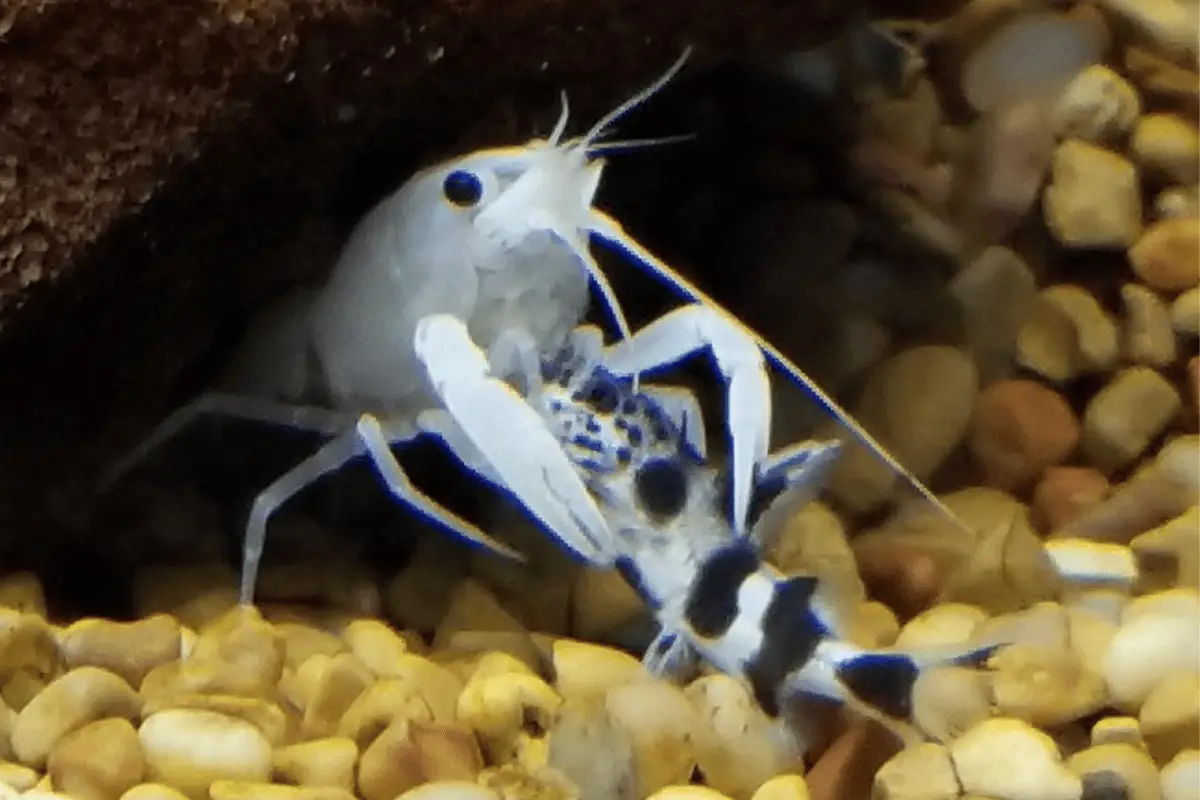
Can I Keep Plecos With Crayfish?
I’d advise against it. Housing Plecos and Crayfish together can lead to problems due to their distinct behaviors and habitat needs.
- Dietary Clashes: While Plecos typically munch on algae, crayfish are often omnivores. This might cause crayfish to see Plecos as a snack, particularly if they aren’t fed adequately.
- Environmental Preferences: Plecos love sliding over and clinging to smooth surfaces, but crayfish have a penchant for digging. This burrowing can disturb the environment that Plecos cherish.
- Territorial Tendencies: Crayfish can be quite possessive about their space. They might view Plecos as intruders, leading to possible confrontations or even nips at the Plecos’ fins and body.
- Molting Vulnerability: Crayfish undergo molting phases where they shed their exoskeleton, during which they become vulnerable. Plecos, being opportunistic, might stress or bother the molting crayfish.
- Space Competition: Both Plecos and crayfish are bottom dwellers, so they will be competing for the same space. In confined areas, this can heighten tensions and increase the chances of altercations.
Also Read: Pleco Fish Tank Mates
Plecos vs. Crayfish: Behavior
The first factor worth considering is the Plecos’ and Crayfish’s natural behavior. Here is what you should know:
Pleco Fish: Natural Behavior
Plecos, mostly peaceful nocturnal bottom-feeders, have a knack for scavenging algae and detritus. They do, however, display territorial behavior towards their kin in crowded settings.
- Night Owls: Plecos come alive at night, feeding and roaming their domain.
- Natural Cleaners: A favorite in aquariums, Plecos have a penchant for algae, assisting in maintaining tank cleanliness.
- Space Defenders: When space is tight, Plecos can show aggression towards fellow Plecos, marking their own zones.
- Special Suction: Armed with a distinctive mouth, Plecos stick to surfaces and scrape off algae, even from sheer glass.
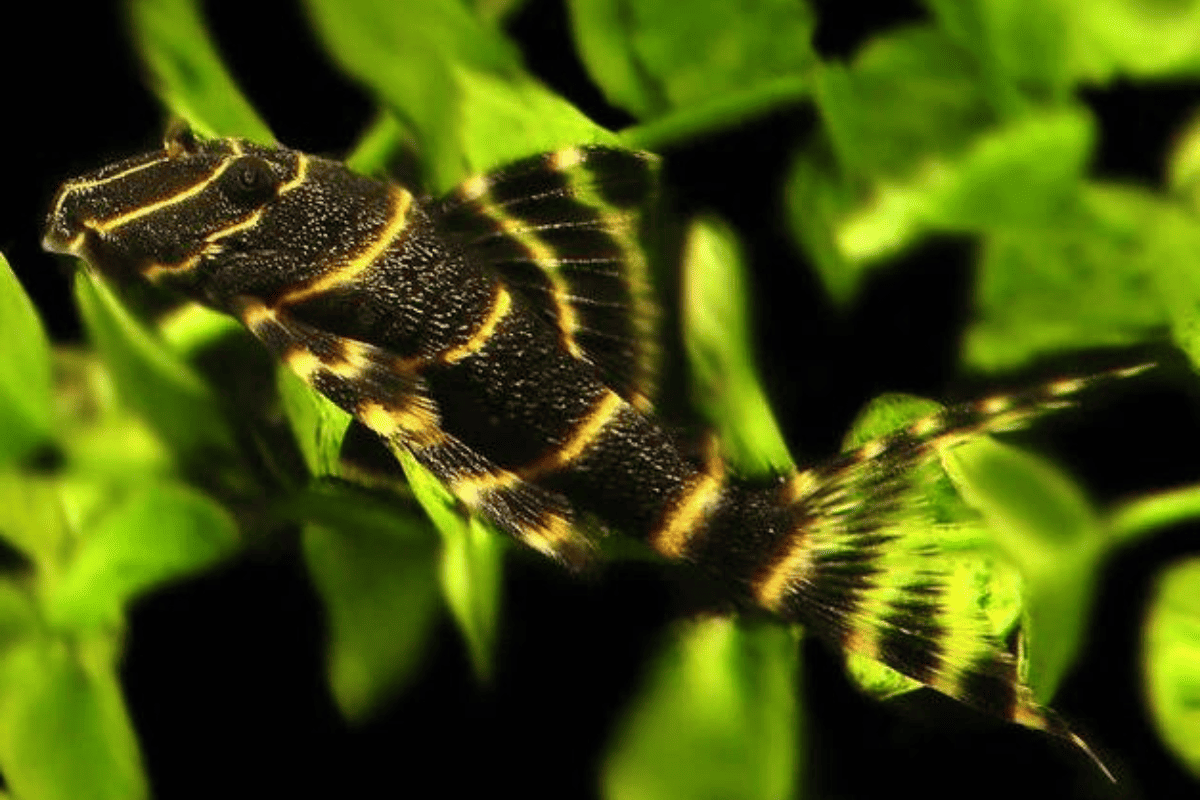
Crayfish: Natural Behavior
Crayfish, omnivorous crustaceans, have a reputation for their territorial and sometimes aggressive nature. They can turn into opportunistic predators under the right conditions.
- Eat All: Crayfish are not fussy eaters; they consume both flora and fauna, including tiny fish and detritus.
- Burrow Experts: These creatures take pleasure in digging, often crafting intricate tunnel networks in their substrate.
- Defenders of the Realm: Crayfish can become feisty, particularly when protecting their turf or in mating scenarios.
- Shed and Grow: As crayfish mature, they undergo molting, shedding their external layer, which leaves them temporarily vulnerable.
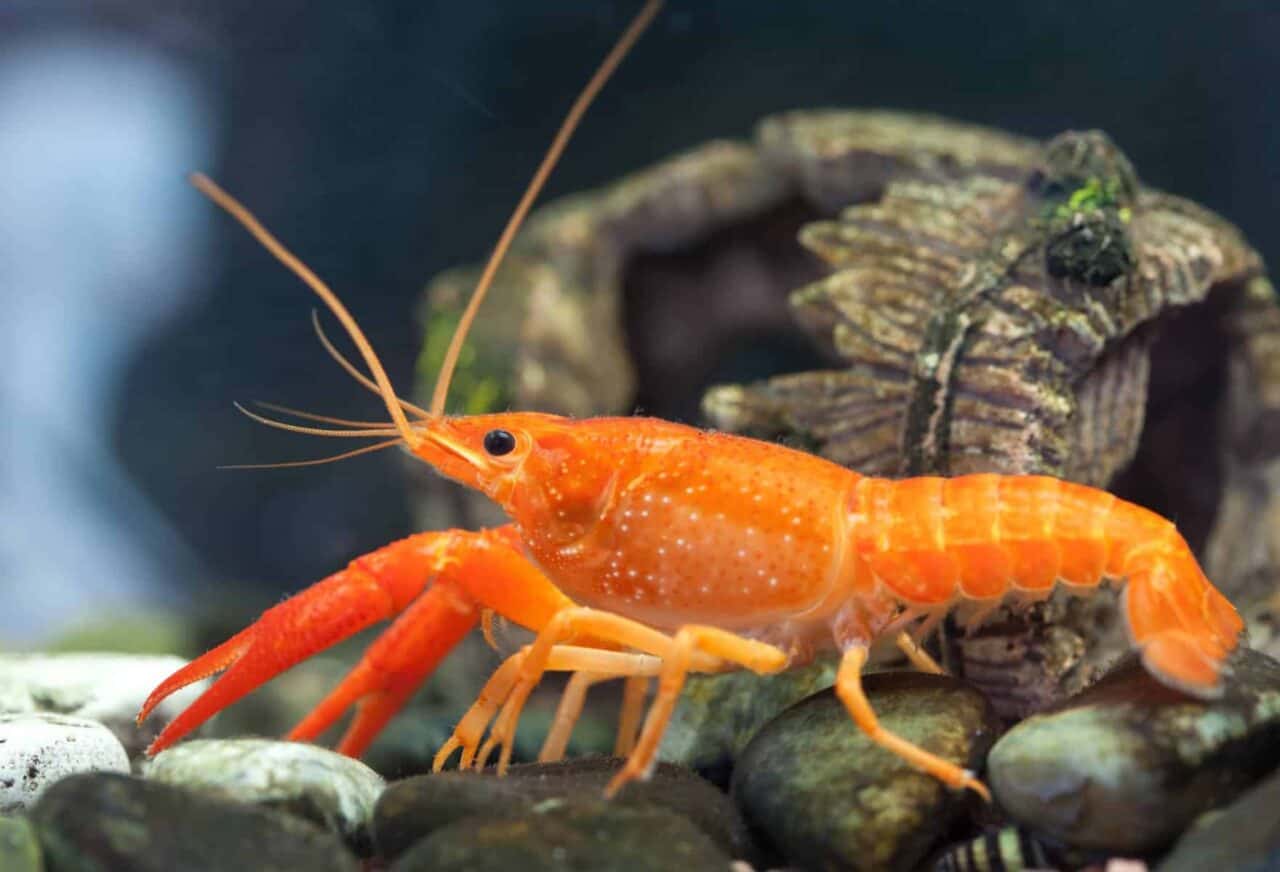
Ideal Parameters for Plecos and Crayfish
Setting up an aquarium requires understanding the perfect water conditions for your chosen species. Let’s compare the needs of Plecos and Crayfish and what it takes to house both:
| Parameter | Plecos | Crayfish | Combination |
| Temperature | 74-80°F | 65-75°F | 72-78°F |
| pH Level | 6.5-7.5 | 7.0-8.0 | 7.0-7.5 |
| Water Hardness | 6-10 dGH | 3-15 dGH | 6-12 dGH |
Pleco Fish: Ideal Parameters
To keep Plecos happy, they need warm water temperatures and pH that’s on the slightly acidic to neutral side. A moderate water hardness level suits them best.
- Temperature Sweet Spot: Between 74°F and 80°F.
- pH Sweet Spot: A cozy range of 6.5 to 7.5.
- Water Hardness: Ideally, a soft to moderately hard range, about 4-15 dH.
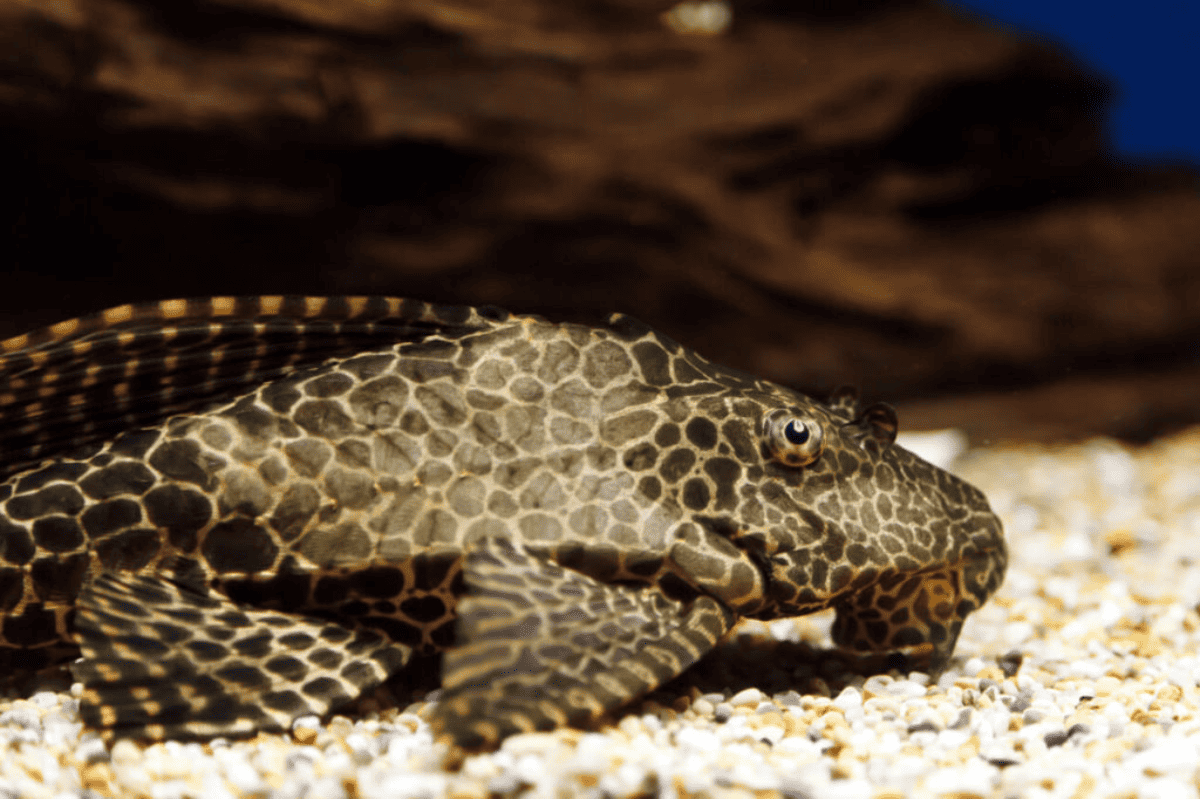
Crayfish: Ideal Parameters
Crayfish are cool-water lovers compared to Plecos and are pretty flexible when it comes to pH. Their water hardness preference is diverse.
- Cool Waters: They like it between 65°F and 75°F.
- pH Preferences: From 6.5 to 8.0, they’re more adaptable than Plecos.
- Water Hardness: They’re comfortable between 3-18 dH, both in soft and hard water scenarios.

Plecos vs. Crayfish: Tank Setup
If you’re thinking of hosting Plecos and Crayfish together, here’s a guide to balance their needs:
| Setup Aspect | Plecos | Crayfish | Combo Setup |
| Ammonia/Nitrite/Nitrate | Keep it low | Keep it low | Keep it super low |
| Tank Size | 30+ gallons (depends on the species) | 20+ gallons | Think 40+ gallons |
| Plants | Real or artificial | Tough plants or none | Blend of both; go for resilient ones |
| Decor | Loves driftwood and caves | Big on rocks and hiding spots | Mix of both: driftwood and rocks |
| Filtering | They like it strong | Moderate flow’s their thing | Strong flow but with calm zones |
| Heater | A must | Optional, species-dependent | Definitely needed |
| Ground Material | Sand or smooth pebbles | Sand or fine pebbles | Go for fine pebbles or sand |
| Pump | Great for oxygen | Not always essential | Good to have, not a must-have |
| Lighting | Moderate brightness | Likes it dim or moderate | Moderate but with some shadowy spots. |
Pleco Fish: Tank Setup
Plecos require spacious tanks due to their potential size, and they benefit from well-filtered water to mimic their natural habitats.
Their setup often incorporates natural-looking elements.
- Ammonia/Nitrite/Nitrate: Plecos need stable water conditions; maintain ammonia and nitrite at 0 ppm and nitrate below 20 ppm.
- Tank Size: A minimum 55-gallon tank is advised for adult Plecos, given their potential size.
- Foliage: Incorporate live or silk plants to provide hiding spots and mimic their natural environment.
- Decorations: Driftwood is essential; Plecos rasp on it, aiding digestion and providing shelter.
- Filter: Strong filtration is recommended; canister filters work best due to their bio-load.
- Heater: Keep the tank between 74°F and 80°F; use an adjustable heater.
- Substrate: Sand or fine gravel is ideal as it’s soft on Plecos’ undersides.
- Pump: A moderate flow rate suits Plecos, ensuring efficient oxygen exchange.
- Lighting: Moderate lighting suffices; Plecos are nocturnal and prefer subdued lighting during the day.
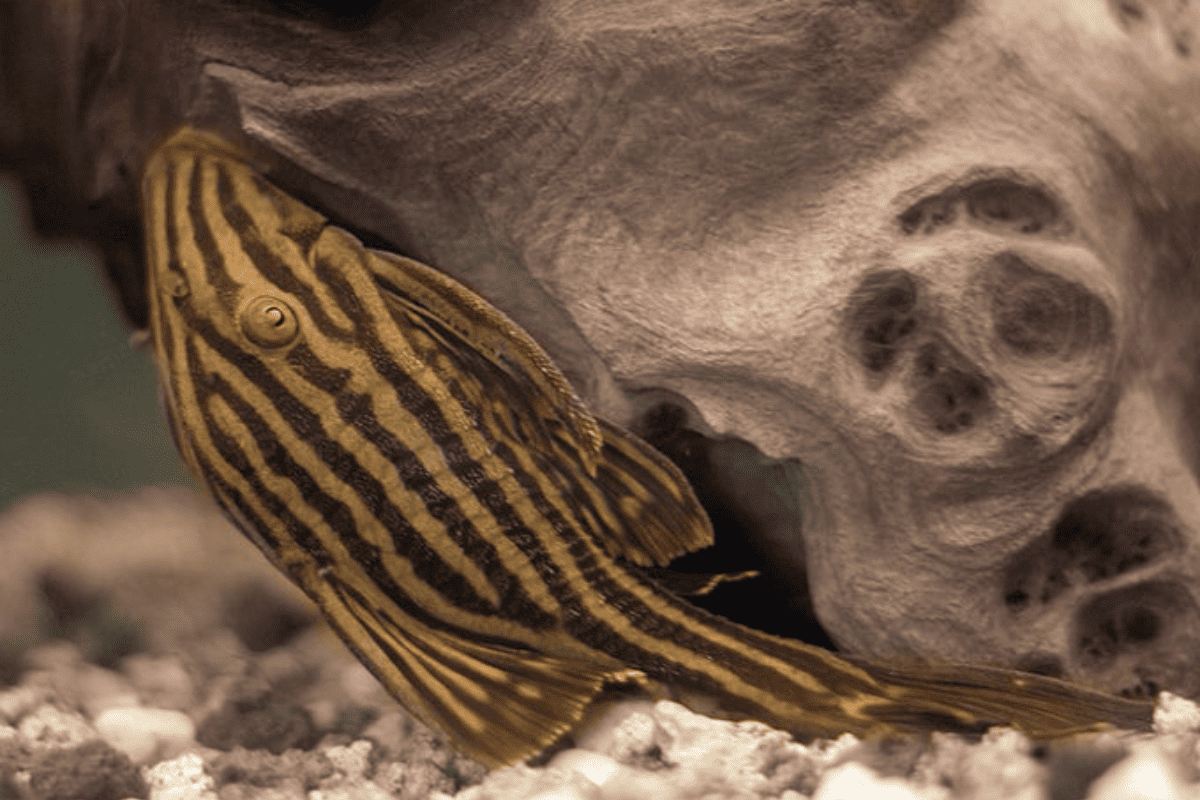
Crayfish: Tank Setup
Crayfish need a setup that facilitates burrowing and hiding, while also maintaining a stable aquatic environment for their health.
- Ammonia/Nitrite/Nitrate: Maintain ammonia and nitrite levels at 0 ppm and nitrate below 30 ppm for crayfish.
- Tank Size: A 20-gallon tank is typically suitable for a single crayfish.
- Foliage: Robust plants like java fern work, as crayfish may dig them up or munch on softer ones.
- Decorations: Plenty of caves and hiding spots, using rocks or PVC pipes, helps crayfish feel secure.
- Filter: Sponge filters are crayfish-friendly and provide biological filtration.
- Heater: Temperature should range between 65°F and 75°F; ensure the heater is crayfish-safe.
- Substrate: A thicker layer of sand or fine gravel supports their burrowing habits.
- Pump: Gentle water flow is ideal, as crayfish are not strong swimmers.
- Lighting: Moderate to low lighting is preferred; crayfish are crepuscular, being most active during dawn and dusk.
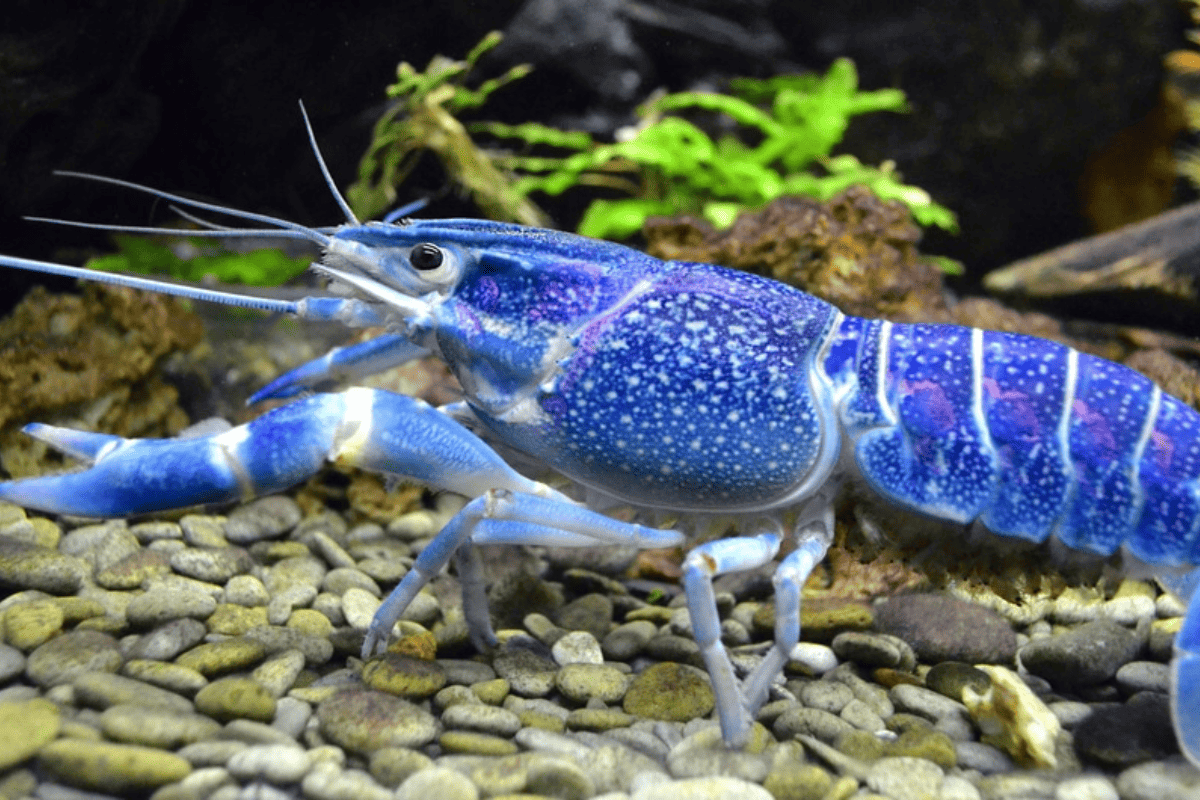
The Dietary Requirements of Plecos and Crayfish
Plecos and Crayfish have distinct dietary needs. Here’s a brief comparison, plus what to consider if you’re feeding both in the same tank:
| Dietary Element | Plecos | Crayfish | Both Types |
| Food Types | Algae wafers, veggies | Protein-based pellets | Variety of both; balance is key |
| Quantity | Daily based on size & species | Based on size & growth rate | Monitor consumption, adjust as needed |
| Feeding Schedule | Nightly, as they’re nocturnal | Daily or every other day | Alternate times or separate zones |
Pleco Fish: Ideal Dietary Requirements
Plecos primarily consume algae, but their diet should be diversified with other nutrients to ensure optimal health.
- Food Types: Algae wafers are staples, but also offer veggies like zucchini and specialized Pleco pellets.
- Quantity: Plecos eat consistently; a few wafers daily, supplemented by veggies, suffice for most species.
- Feeding Schedule: Feed Plecos during the evening when they are most active, mimicking their nocturnal behavior.
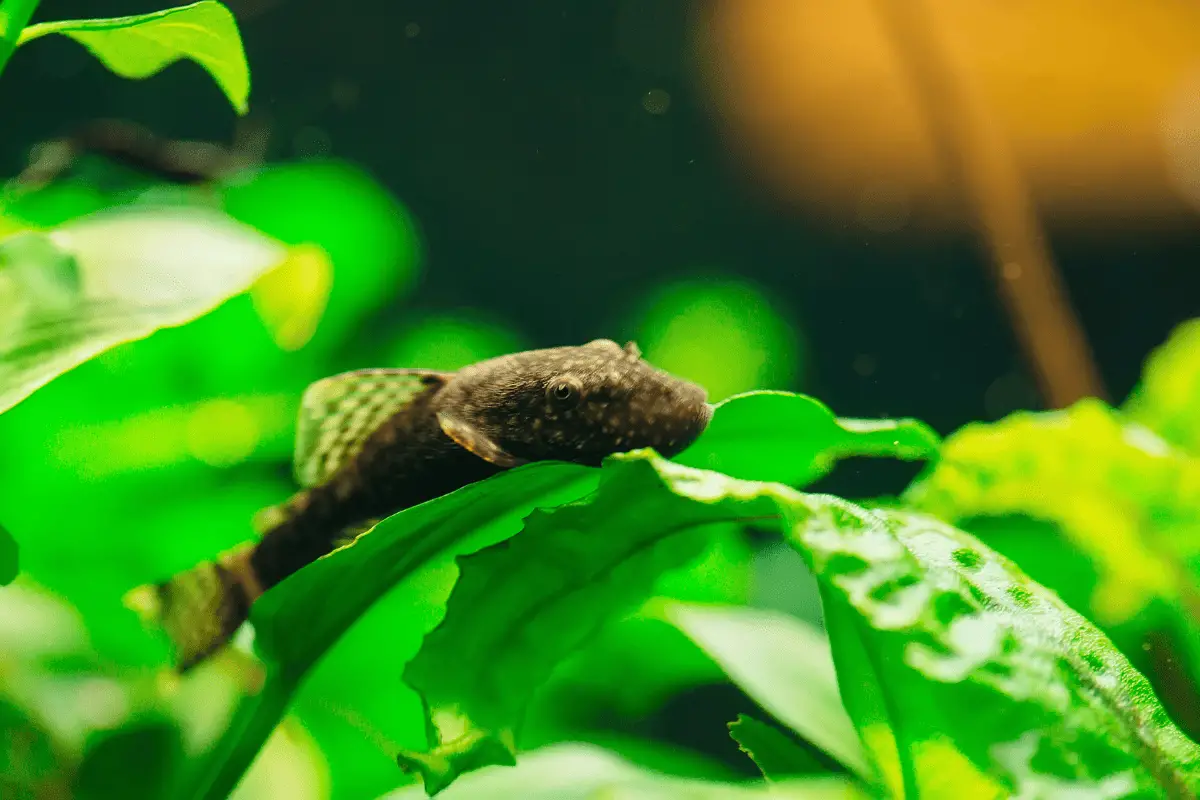
Crayfish: Ideal Dietary Requirements
Crayfish are opportunistic feeders, consuming a balanced diet of plant and animal matter in the wild.
- Food Types: Offer sinking pellets, blanched veggies, and occasional protein like fish or shrimp.
- Quantity: Feed them an amount they can consume in 2-3 hours to prevent overfeeding and tank pollution.
- Feeding Schedule: Feed crayfish once daily, reducing if there’s uneaten food to maintain water quality.
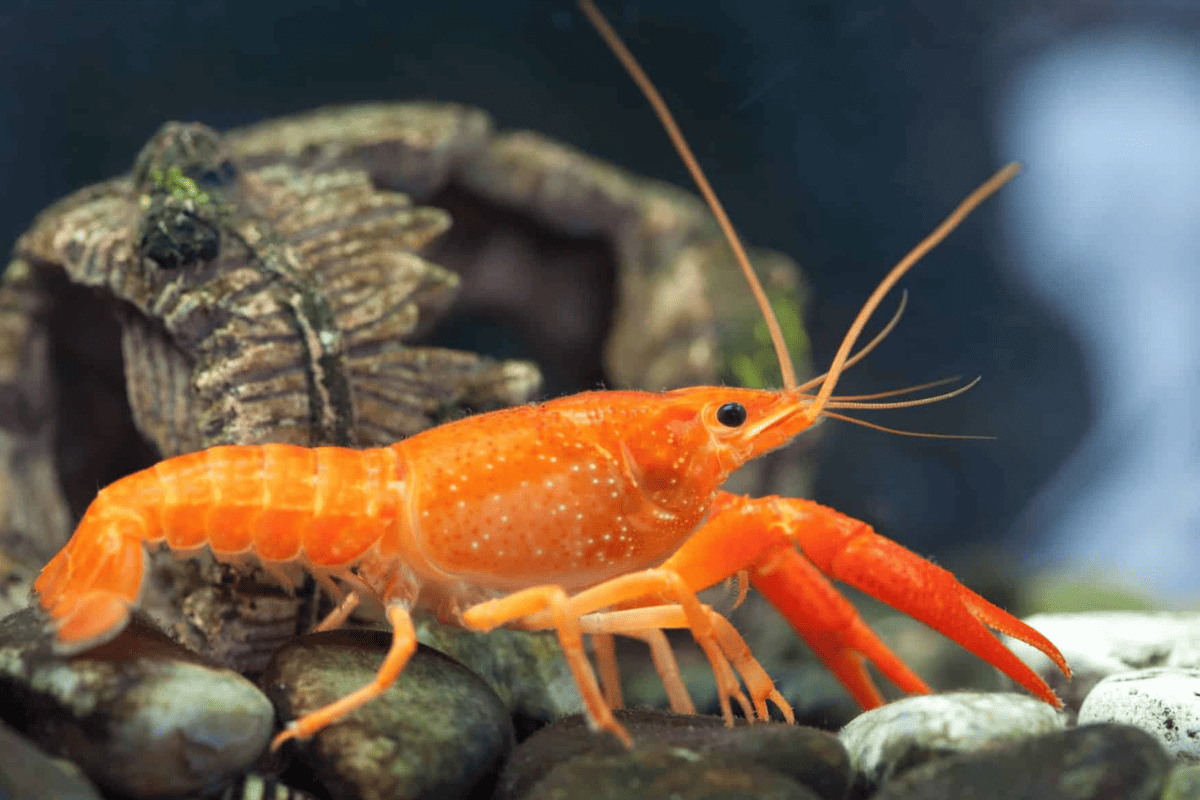
Pleco Species Most Suitable for a Tank With Crayfish
While it is not recommended, if you’re keen to experiment with cohabitation, selecting robust and larger Plecos might work.
Careful monitoring and providing ample space and hiding spots can help reduce potential conflicts with crayfish.
- Bristlenose Plecos: A hardy species, they’re smaller but robust, making them less of a target while not overly dominating the tank.
- Common Plecos: Growing up to 24 inches, their size often deters crayfish from engaging aggressively.
- Royal Plecos: Their distinct appearance and larger size can make them suitable companions, though they may require more extensive tanks.
- Rubber Lip Plecos: A peaceable species that sticks close to surfaces, their habits make them less likely to disrupt or be disrupted by crayfish.
- Clown Plecos: These are smaller, staying around 4 inches, but their woody diet and peaceful nature make them suitable for cohabitation.
Also Read: Can Plecos And Rope Fish Live Together?
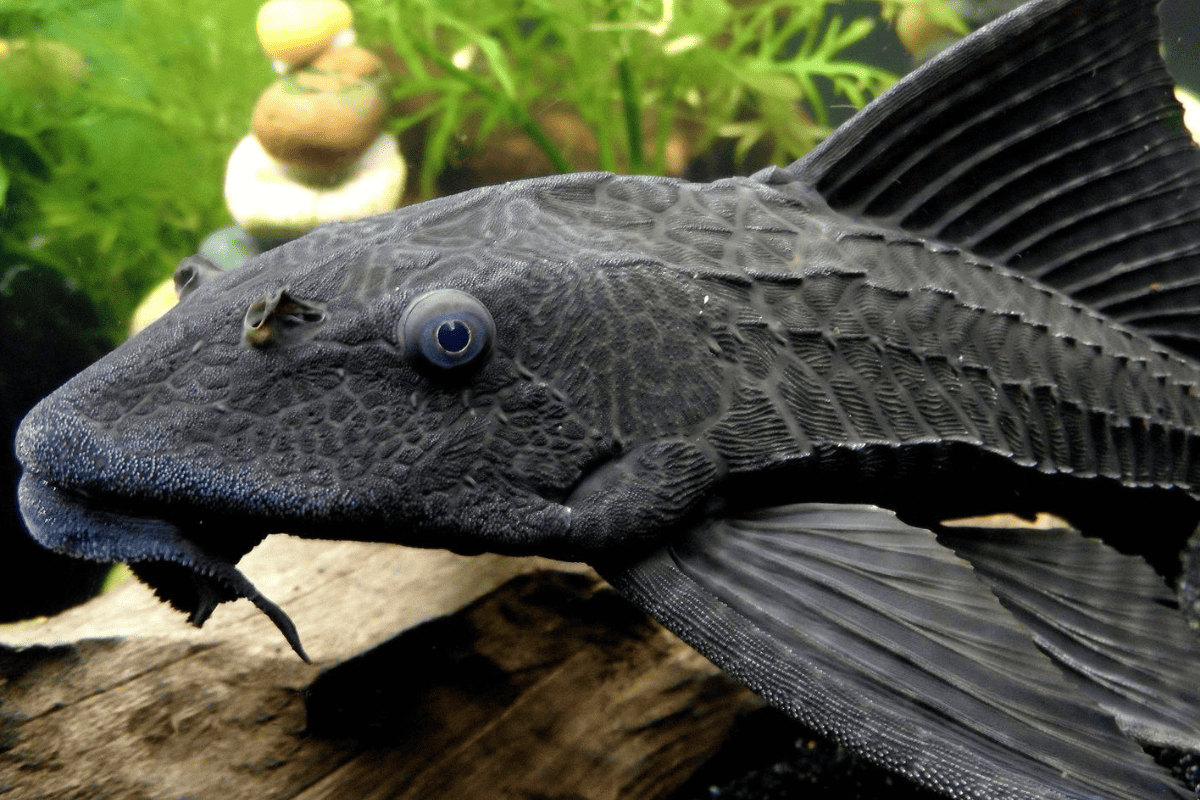
Best Crayfish Species to Keep With Plecos
To create harmony in a tank with Plecos, crayfish should be less aggressive and not too large, ensuring the Plecos are not overwhelmed or threatened.
- Dwarf Orange Crayfish (CPO): Their smaller size (up to 2 inches) and less aggressive behavior makes them less likely to trouble Plecos.
- Blue Moon Crayfish: A moderately sized crayfish that, while beautiful, is not overly aggressive and coexists with Plecos.
- White Specter Crayfish: A peaceful species known for its striking appearance, it’s less likely to harass tank mates like Plecos.
- Australian Red Claw Crayfish: Though larger, they’re relatively peaceable, but monitor interactions to ensure Plecos aren’t stressed.
- Cherax Destructor: Known for their unique colors and calmer demeanor, they can share a space with Plecos when given enough territory.
Which Pleco Types Shouldn’t Be Kept with Crayfish?
Certain Pleco species are more vulnerable to crayfish due to their size, temperament, or particular care needs.
It’s advisable to keep these Plecos in separate environments to ensure their safety and well-being.
- Zebra Plecos (L046): Highly prized and expensive, they are smaller and can easily become crayfish prey.
- Golden Nugget Plecos: Their unique patterns and smaller stature make them a potential target for aggressive crayfish.
- Queen Arabesque Plecos (L260): While beautifully patterned, their smaller size and specific habitat needs can be compromised by crayfish.
- Snowball Plecos: Their peaceful nature and preference for calm environments make them ill-suited for tanks with potentially aggressive crayfish.
- Peppermint Plecos (L030): Though striking in appearance, they’re best kept in specialized environments away from potential crayfish threats.
Crayfish Species to Avoid in a Pleco Fish Tank
Certain crayfish species, due to their aggressive nature or size, can pose significant threats to Plecos.
To ensure your Plecos remain safe, it’s best to avoid these particular crayfish in a shared tank.
- Red Swamp Crayfish: Highly aggressive, this species can prey on fish and should not be kept with Plecos.
- Marble Crayfish (Marmorkrebs): Prolific breeders, they can quickly overrun a tank and increase stress on Plecos.
- Tasmanian Giant Freshwater Crayfish: Their massive size (up to 31 inches) can intimidate and pose a direct threat to Plecos.
- Signal Crayfish: Known to be aggressive hunters, they can easily target and injure Plecos in the same environment.
- Electric Blue Crayfish: While visually appealing, their predatory nature can make the tank environment unsafe for Plecos.
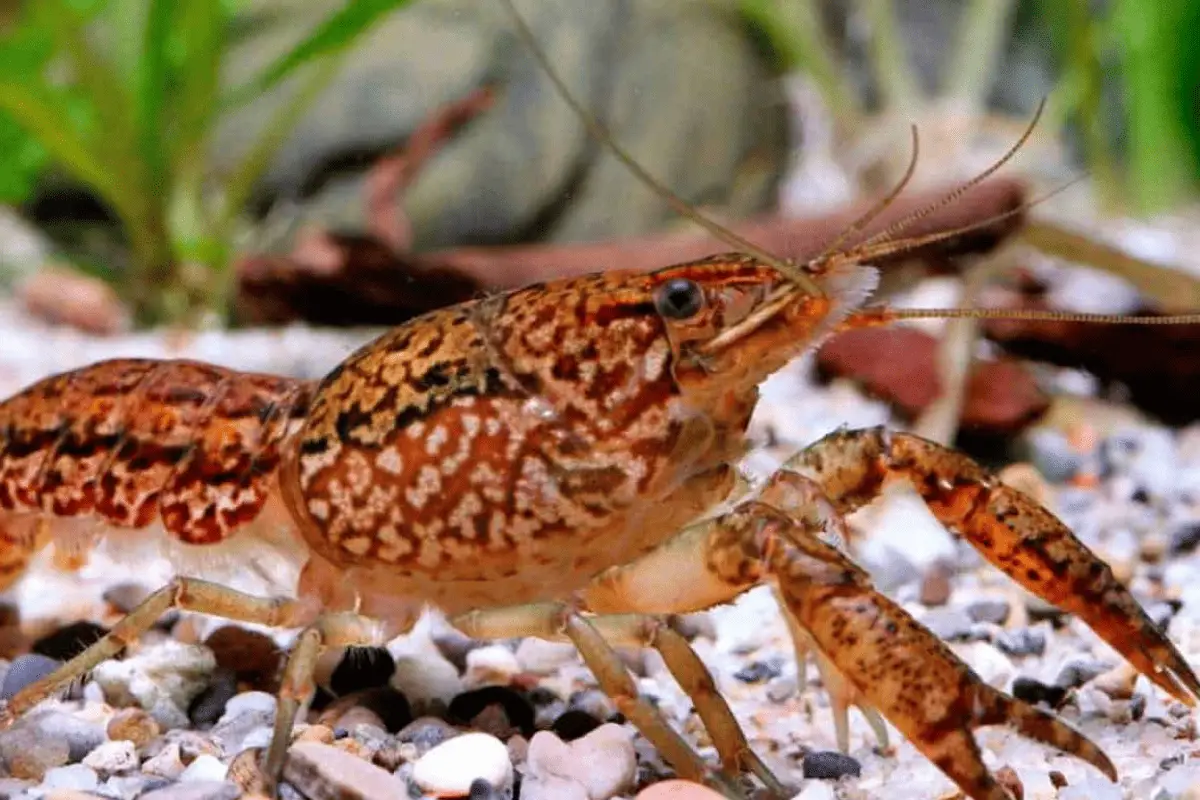
How to Introduce Crayfish to a Pleco Fish Tank
Introducing crayfish to a tank housing Plecos requires a systematic approach. A step-by-step method ensures a smooth transition and reduces potential conflicts.
- Acclimatization: Gradually adapt crayfish by floating its bag in the tank for 30 minutes, ensuring temperature equilibrium.
- Introducing Crayfish at Night: Introduce crayfish during the evening when Plecos are more active. This timing promotes more natural and positive interactions.
- First 48 Hours Watch: During the initial two days, be vigilant. Watch out for any aggressive behavior or signs that they’re stressed.
- Territorial Decor: Add about 5-6 decorative caves or similar items. Both creatures need to feel they have their own space.
- First-Week Feeding Strategy: In the first seven days, vary their food daily. Think algae wafers for Plecos and shrimp pellets for the crayfish.
Key Tips for Housing Plecos and Crayfish Together
A peaceful coexistence between Plecos and crayfish requires consistent care, keen observation, and a thoughtful setup.
- Tank Size: Go for 40 gallons or more. Both species need room to move and claim their space.
- Observation is Key: Especially during feeding times, ensure no single species dominates.
- Zone Your Feedings: Set distinct feeding spots. Let Plecos have sinking pellets on one side and crayfish food on the other.
- Hideout Variety: Use a blend of wood, rocks, and caves, targeting around 8-10 hiding spots. My Pleco absolutely loves the Jabukosu Aquarium Cave (link to Amazon).
- Water Quality Matters: Weekly 20-25% water changes keep conditions ideal for both species.
- Watch the Crowd: Stick to 1-2 crayfish and give your Plecos room to reduce territorial issues.
- Steady Temperatures: Aim for a consistent 72-78°F temperature for the comfort of both.
Perfect Tank Mates for Plecos and Crayfish
When pairing Plecos and crayfish, you want tank mates that get along and won’t hassle each other. Aim for peaceful, resilient, and non-aggressive companions.
- Corydoras Catfish: Gentle bottom residents, they vibe well with Plecos and don’t clash with crayfish.
- Rasboras: These quick, schooling fish generally fly under the crayfish’s radar and get along with Plecos.
- Tetras: Their speed and group swimming habits help them steer clear of crayfish and keep Plecos stress-free.
- Snails (e.g., Mystery, Nerite): Their tough exterior puts off crayfish, and they help control algae, complementing Plecos.
- Rainbowfish: Their lively colors and energetic swims are visually pleasing and they won’t bother Plecos or crayfish.
- Big Shrimp (e.g., Amano or Bamboo): Their size lets them sidestep crayfish issues and they’re friendly to Plecos.
Also Read: Can Plecos And Shrimp Live Together?
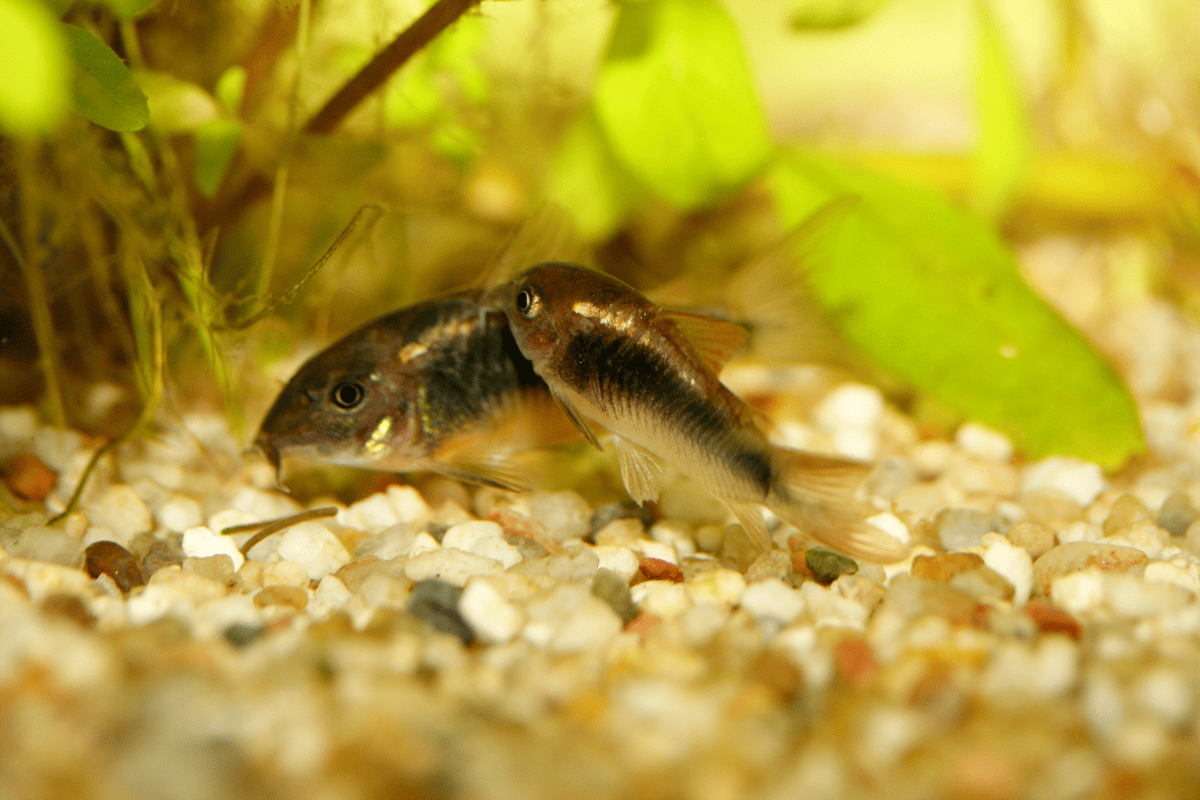
Conclusions
For fast readers, here’s a short recap:
- Combining Plecos and Crayfish in a single tank is tricky due to their distinct behaviors, eating habits, and potential for conflicts.
- Plecos, being nocturnal algae-lovers, contrast with the more aggressive and sometimes predatory crayfish, which makes living together tough.
- Their ideal living conditions, including water settings and food, also differ a lot. Creating a joint habitat can be a challenge.
- If you’re brave enough to try, pick the right species, closely monitor their relations, and offer plenty of hiding places. Still, be aware: it’s a gamble.
- If looking for tank mates, go for non-confrontational ones like Corydoras Catfish, Rasboras, Tetras, large shrimp, snails, or Rainbowfish to ensure a peaceful tank atmosphere.
